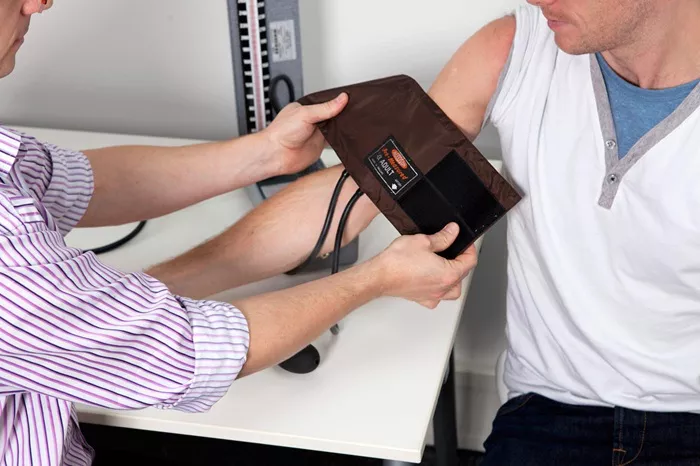High blood pressure is a common health issue that affects millions of people worldwide. The bottom number in a blood pressure reading, also known as diastolic blood pressure, measures the pressure in your arteries when your heart rests between beats. A high diastolic number (usually above 80 mmHg) can increase the risk of heart disease and stroke. If you’re looking for ways to lower your bottom BP number, this article will provide practical and effective strategies based on medical expertise.
Understanding Diastolic Blood Pressure
Blood pressure readings consist of two numbers. The top number (systolic) represents the pressure when your heart beats, while the bottom number (diastolic) indicates the pressure when your heart relaxes. A healthy diastolic reading should be below 80 mmHg. If it consistently stays above this level, it may indicate hypertension.
Several factors contribute to high diastolic blood pressure, including poor diet, lack of exercise, stress, and genetics. The good news is that lifestyle changes and proper medical care can help bring this number down.
The Role of Diet in Lowering Diastolic Pressure
What you eat plays a crucial role in managing blood pressure. A diet high in sodium can cause your body to retain water, increasing pressure in your blood vessels. Reducing salt intake is one of the most effective ways to lower diastolic pressure. Avoid processed foods, canned soups, and fast food, as they often contain hidden sodium.
Instead, focus on eating fresh fruits, vegetables, whole grains, and lean proteins. Foods rich in potassium, such as bananas, spinach, and sweet potatoes, help balance sodium levels in the body. Magnesium-rich foods like nuts, seeds, and leafy greens also support healthy blood pressure.
The DASH (Dietary Approaches to Stop Hypertension)diet is specifically designed to lower blood pressure. It emphasizes whole foods, limits red meat, and reduces sugar and unhealthy fats. Following this diet can significantly improve diastolic readings over time.
Exercise and Its Impact on Blood Pressure
Regular physical activity strengthens the heart, allowing it to pump blood more efficiently. When your heart works better, the pressure in your arteries decreases. Aim for at least 150 minutes of moderate exercise per week, such as brisk walking, swimming, or cycling.
Strength training can also help by improving circulation and reducing arterial stiffness. However, avoid heavy lifting if you have uncontrolled high blood pressure, as it may cause sudden spikes. Consistency is key—exercising regularly keeps your blood pressure in check and supports overall heart health.
Managing Stress for Better Blood Pressure
Chronic stress can lead to long-term increases in blood pressure. When you’re stressed, your body releases hormones that temporarily raise your heart rate and narrow blood vessels. Over time, this can contribute to higher diastolic readings.
Finding healthy ways to manage stress is essential. Techniques such as deep breathing, meditation, and yoga can help calm the nervous system. Even simple activities like reading, listening to music, or spending time in nature can reduce stress levels. Getting enough sleep is also crucial, as poor sleep can worsen blood pressure problems.
The Importance of Limiting Alcohol and Quitting Smoking
Alcohol can raise blood pressure, especially if consumed in excess. Men should limit themselves to two drinks per day, while women should stick to one. Drinking more than this can lead to long-term increases in diastolic pressure.
Smoking damages blood vessels and accelerates hardening of the arteries, making it harder for blood to flow. Quitting smoking improves circulation and lowers blood pressure within weeks. If you need help quitting, consider nicotine replacement therapy or support groups.
Maintaining a Healthy Weight
Carrying extra weight forces the heart to work harder, increasing blood pressure. Losing even a small amount of weight can make a difference. A 5-10% reduction in body weight has been shown to lower diastolic pressure significantly.
A combination of diet and exercise is the best way to achieve sustainable weight loss. Avoid crash diets, as they can lead to short-term results but often fail in the long run. Instead, focus on gradual changes that you can maintain over time.
Monitoring Blood Pressure at Home
Keeping track of your blood pressure at home helps you understand how lifestyle changes affect your numbers. Use a reliable home blood pressure monitor and check your readings at the same time each day. Record your results and share them with your doctor to adjust treatment if needed.
Avoid checking your blood pressure right after exercise or when stressed, as these can give falsely high readings. Sit quietly for at least five minutes before taking a measurement for the most accurate results.
When to Seek Medical Help
While lifestyle changes can greatly improve diastolic blood pressure, some people may need medication. If your diastolic number remains high despite diet and exercise, consult a doctor. Common medications for high blood pressure include diuretics, beta-blockers, and ACE inhibitors.
Never stop taking prescribed medication without consulting your doctor, even if your numbers improve. Sudden discontinuation can cause dangerous spikes in blood pressure. Work with your healthcare provider to find the best treatment plan for your needs.
Conclusion
Lowering your bottom BP number requires a combination of healthy eating, regular exercise, stress management, and avoiding harmful habits. Small, consistent changes can lead to significant improvements over time. By taking control of your lifestyle and working with your doctor, you can reduce your risk of heart disease and enjoy better overall health.
Remember, managing blood pressure is a lifelong commitment. Stay patient, stay consistent, and prioritize your heart health every day. Your body will thank you for it.
Related topics:
How To Get Bottom BP Number Down?
What Makes Your Bottom BP Number High?
DBP: A Vital Indicator of Cardiovascular Health


